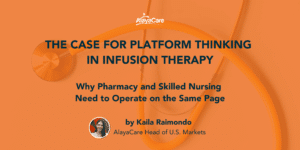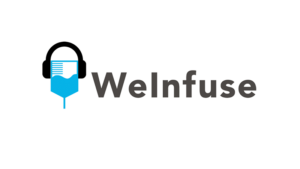Voicing Our Concerns for the Appropriations Act by Congress
WeInfuse joins the National Infusion Center Association (NICA) and infusion providers across the country to voice our concern and opposition to the changes proposed in the Appropriations Act by Congress.
NICA works diligently to champion infusion provider and patient voices, insulate operations from adverse market changes, and preserve the ability to treat patients efficiently in the most cost-effective setting.
Despite being passed in December 2020, Congress recently slipped a change into the bill that would require the Centers for Medicare & Medicaid Services to adjust its payment methodology to exclude certain self-administered drugs and biological products from the payment rates for physician-administered formulations of such drugs and biologics (i.e., namely Cimzia and Orencia). CMS remained silent on guidance or communications to infusion providers until rates were published this week. It’s estimated that providers will experience at least a 20% reduction in drug payments for these products. As this change will result in a reduced ASP, drug payments across many commercial payers will also be impacted. Because of CMS’s silence, it’s been impossible to fully assess the impact of this change and adapt to it in 30 days without compromising access to care.
Importance From a Provider Perspective
From a provider perspective, it is infeasible to fully understand and mitigate the economic and access implications of a 20+% reduction in drug payments within 30 days. Infusion providers cannot absorb these losses given current economics, so they will be offset on the acquisition side through contract renegotiation. Infusion providers need much more time to assess the financial impact of this change across their payer mix, attempt to renegotiate their annual contracts with distributors, and coordinate referrals to a different care setting if they are underwater on these products. For providers to change their plans in less than 30 days is an unrealistic expectation that will impact access to care for thousands of medically stable patients.
However, providers will be reluctant to switch medically stable patients to a different medication for reasons unrelated to health or safety. If providers must refer their Cimzia and Orencia patients to a different site of care, patient navigation can take well over 30 days under the best conditions and many hospitals are not accepting non-acute infusion patients. Ineffective management of autoimmune patients will result in poor health outcomes, lost productivity, increased health care consumption and consequently, health spend and increased burden on the health care system.
Importance From a Chronic Disease Perspective
From a chronic disease patient perspective, the goal is to achieve and maintain a state of medical stability using as few drugs and medical services as possible. These patients have been on a long journey to find medicines that effectively manage their condition. But, by patients losing access to care in office-based infusion centers, their options will be to receive care in a more expensive care setting, increasing cost-share liability for both patient and payer. If they cannot afford the increased cost, they generally revert back to a conventional treatment that proved unsuccessful at managing their condition. If patients are no longer able to access these medications, we are deeply concerned about the ramifications for health outcomes, quality of life, and the physical, emotional, and economic burdens of disease.
What Can Be Done
Infusion providers struggle to maintain sustainable access to safe, high-quality, cost-effective care within a volatile channel. Forcing them to understand and acclimate in 30 days to this major economic change will take time away from patient care, make it harder for providers to continue managing complex disease effectively and affordably, and cause medically stable patients to flare. It is imperative that we reduce beneficiary costs without disrupting access to care for medically stable patients or restricting access for new starts. Forcing the lowest cost care setting to figure out how to absorb a 20% reduction in drug payments without sufficient time to acclimate will disrupt access to care and worsen health outcomes with higher OOP costs for beneficiaries—clearly not what Congress, OIG, or CMS intended with this change.
For more information or to see what you can do to help, please contact NICA here.




